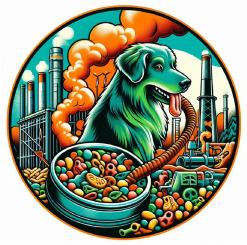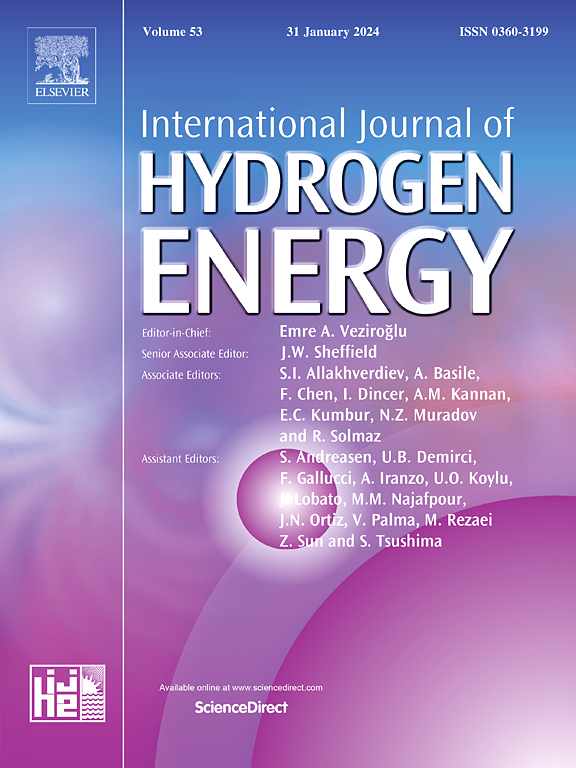Anaerobic decomposition of substandard pet food as a raw material source for producing hydrogen from methane
IF 8.1
2区 工程技术
Q1 CHEMISTRY, PHYSICAL
引用次数: 0
Abstract
A potential raw material for producing hydrogen (the main carrier for the accumulation, storage and transportation of energy) is methane from biogas. An approach to producing biogas with a high methane content (69–72%) from waste commercial dry and wet food for dogs and cats under mesophilic conditions has been demonstrated. For 27–28 days under anaerobic conditions, the degree of biotransformation of waste was 60–88%. As a result of mineralization of watered organic waste, the content of ammonium nitrogen and phosphorus in the form of phosphates amounted to 676–887 mgNH4+/l and 77–160 mgPO43-/l, respectively. In anaerobically treated effluent, accumulation of sulfide ions up to 22 mg/l was observed. The solid sediment and anaerobically treated effluent (liquid fraction) obtained upon completion of the biotransformation of pet food waste are a potential organic fertilizer for agricultural needs, and methane from biogas is a raw material for producing hydrogen and pure carbon for the needs of the nanoindustry.

对不合格宠物食品进行厌氧分解,作为甲烷制氢的原料来源
生产氢气(能量积累、储存和运输的主要载体)的潜在原料是沼气。在中温环境下,利用商业干湿食物废料为狗和猫生产甲烷含量高(69-72%)的沼气的方法已经得到证实。在厌氧条件下27 ~ 28 d,废弃物的生物转化率为60 ~ 88%。水处理有机废弃物由于矿化,以磷酸盐形式存在的铵态氮和磷含量分别为676 ~ 887 mgNH4+/l和77 ~ 160 mgPO43-/l。在厌氧处理的废水中,观察到硫化物离子的积累高达22毫克/升。在完成宠物食品垃圾的生物转化后获得的固体沉积物和厌氧处理的废水(液体部分)是农业需求的潜在有机肥料,沼气中的甲烷是生产氢和纯碳的原料,用于纳米工业的需求。
本文章由计算机程序翻译,如有差异,请以英文原文为准。
求助全文
约1分钟内获得全文
求助全文
来源期刊

International Journal of Hydrogen Energy
工程技术-环境科学
CiteScore
13.50
自引率
25.00%
发文量
3502
审稿时长
60 days
期刊介绍:
The objective of the International Journal of Hydrogen Energy is to facilitate the exchange of new ideas, technological advancements, and research findings in the field of Hydrogen Energy among scientists and engineers worldwide. This journal showcases original research, both analytical and experimental, covering various aspects of Hydrogen Energy. These include production, storage, transmission, utilization, enabling technologies, environmental impact, economic considerations, and global perspectives on hydrogen and its carriers such as NH3, CH4, alcohols, etc.
The utilization aspect encompasses various methods such as thermochemical (combustion), photochemical, electrochemical (fuel cells), and nuclear conversion of hydrogen, hydrogen isotopes, and hydrogen carriers into thermal, mechanical, and electrical energies. The applications of these energies can be found in transportation (including aerospace), industrial, commercial, and residential sectors.
 求助内容:
求助内容: 应助结果提醒方式:
应助结果提醒方式:


